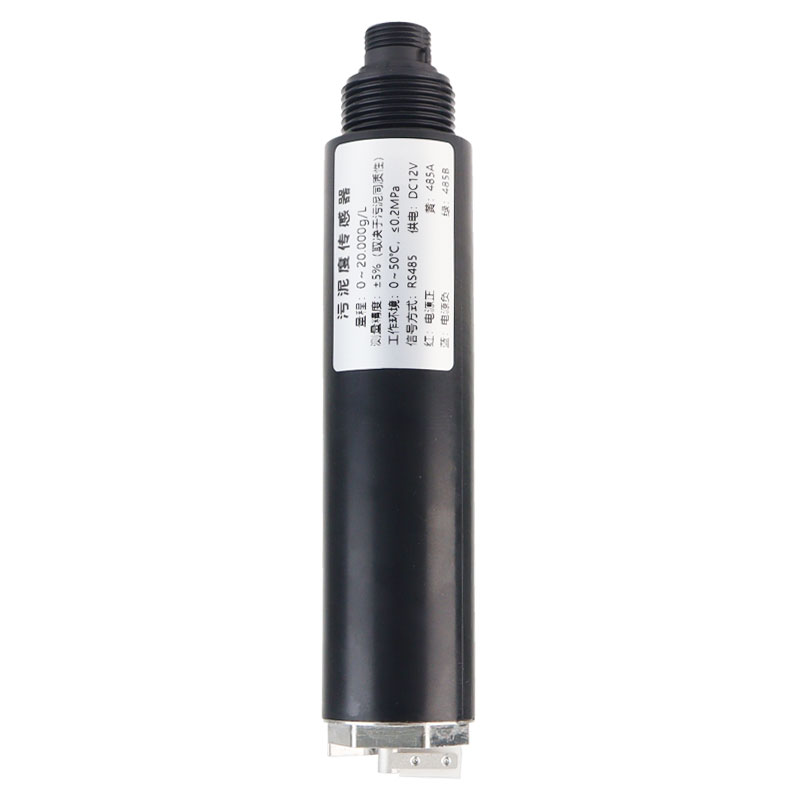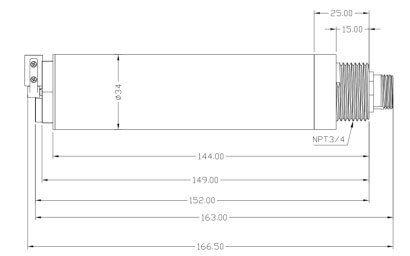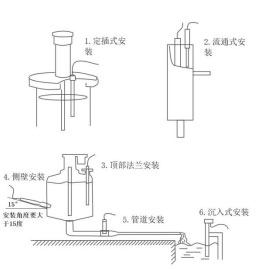Shandong Fengtu IOT Technology Co., Ltd
Sales Manager:Ms. Emily Wang
Cel,Whatsapp,Wechat:+86 15898932201
Email:info@fengtutec.com
Add:No. 155 Optoelectronic Industry Accelerator, Gaoxin District, Weifang, Shandong, China

Sales Manager:Ms. Emily Wang
Cel,Whatsapp,Wechat:+86 15898932201
Email:info@fengtutec.com
Add:No. 155 Optoelectronic Industry Accelerator, Gaoxin District, Weifang, Shandong, China

Model:FT-S11S
Brand:fengtu
one.Sludge concentration meter application environment description
Sludge concentration meter is an online analyzer designed to measure the concentration of suspended sludge in sewage or industrial wastewater treatment.Use the scattering or absorption properties of light to measure the concentration of sludge in water.It has high sensitivity, fast response and real-time monitoring capabilities, and is widely used in fields such as water quality monitoring and sewage treatment.
Signal output: RS485 (MODBUS-RTU).
Infrared LED light source, strong anti-interference ability.
Internal signal isolation technology, strong interference resistance.
Good reproducibility, thermal stability, low drift, small size, fast response
Easy and simple installation, 3/4NPT pipe thread, easy to sink in or install in pipes and tanks, stable performance, long service life
IP68 waterproof standard
two.Sludge concentration meter technical performance and specifications
1.Technical parameters
| Measurement principle | scattered light method |
| Signal mode | RS485 (MODBUS-RTU) |
| Measuring range | 0~20.000g/L |
| Measurement resolution | 0.001g/L |
| Measurement accuracy | ±5% (depending on sludge homogeneity) |
| Self-cleaning function | Equipped with an automatic cleaner, it can effectively prevent biological adhesion and avoid light window pollution, ensuring the data stability of long-term monitoring.The cleaning time and cleaning frequency can be set.Power consumption, 0.7W |
| Shell material | Glass and 316L stainless steel |
| Cable length | Standard 5 meters |
| Supply voltage | 12-24VDC (0.4W@12V) |
| Calibration method | Two point calibration |
| Measurement environment | Temperature 0~50℃ (non-freezing), <0.2MPa |
| Waterproof level | IP68 |
| Installation method | Submersible installation, NPT3/4 thread |
2.Sludge concentration meter size chart

The sensor connector is M12 aviation plug connector 5-pin female seat
three.Sludge concentration meter installation and electrical connections
1.Sludge concentration meter installation

Installation distance requirements: keep more than 5cm from the side wall and more than 10cm from the bottom.
2.Electrical installation
The cable is a 4-core shielded wire, and the wire sequence is defined as:
Red - power cord (12~24VDC)
Blue - Ground (GND)
Green-485B
Yellow-485A
The wiring sequence should be carefully checked before powering on to avoid unnecessary losses caused by wiring errors.
Note: The color of the cable may vary slightly due to different production batches, please refer to the silk screen printing of the cable.
Four.Sludge concentration meter maintenance and care
1.Use and maintenance
The measurement window of the sensor is one of the key components to ensure the normal operation and accurate measurement of the sensor.Its cleaning requirements are critical to ensure accuracy and reliability of measurements.
1.1 Maintenance methods
1.Regular cleaning: The measurement window should be cleaned regularly to remove dirt, sediment and other impurities attached to the surface.The frequency of cleaning depends on the measurement environment, but daily or weekly cleaning is generally recommended.
2.Use mild cleaners: Use mild cleaners when cleaning, and avoid using cleaners containing abrasives or acid-base ingredients to prevent damage to the surface of the measurement window.
3.Soft cloth or sponge: During the cleaning process, a soft cloth or sponge should be used to gently wipe the surface of the measurement window to prevent scratches or wear.
4.Avoid direct contact: Avoid direct contact with the surface of the measurement window during the cleaning process to reduce fingerprint and grease contamination.
5.Rinsing: After cleaning is completed, the measurement window should be rinsed thoroughly with clean water to ensure that residual detergent and dirt are removed.
6.Drying: After cleaning, use a dry soft cloth to gently wipe the surface of the measurement window to remove water stains and ensure complete dryness.
7.Regular inspection: Regularly check the surface of the measurement window for damage or wear to maintain the normal operation of the sensor.
8.Avoid exposure to chemical substances and high-temperature environments: Avoid exposing the measurement window to harmful chemicals or high-temperature environments to prevent damage or corrosion to its surface.When the sensor is used for a long time and measurement errors occur, it can be carried out by cooperating with the instrument.Calibration and correction.When the sensor still cannot be calibrated and measured after maintaining it in the above way, it means that the sensor has failed.Please replace the sensor.
1.2 Precautions
1.The measurement window contains glass components, so avoid using sharp or hard objects to scratch the surface to prevent scratches and damage.
2.It contains sensitive optical components and precision electronic equipment.Avoid exposing the sensor to severe vibration or impact to prevent the optical parts and electronic equipment from being displaced or damaged.There is no maintenance required inside the device.
3.When not in use, an appropriate dust cover or sleeve should be used to protect the optics from dust and contaminants.
liquid level transmitter is used to provide the most accurate product level, interface level and is ideal for remote tank measurement of small and medium-sized storage tanks....
light sensing sensor is a light-sensitive device that can detect light and convert it into electrical signals. It is a photoelectric device that converts the light energy of visible or infrared light into electrical signals....
On the technical specification sheet of each photovoltaic (PV) module, an "IV curve diagram" is attached. What exactly is this? In fact, it is a current-voltage curve diagram, which is a characteristic curve used to describe the relationship between the output current and output volt...
I. PrefaceAs the “oxygen provider” of modern cities, the subway not only drives the urban economic development but also leads the transformation of the way people live. However, in recent years, subway accidents have occurred frequently, and the number of casualties has been on the rise, reflectin...